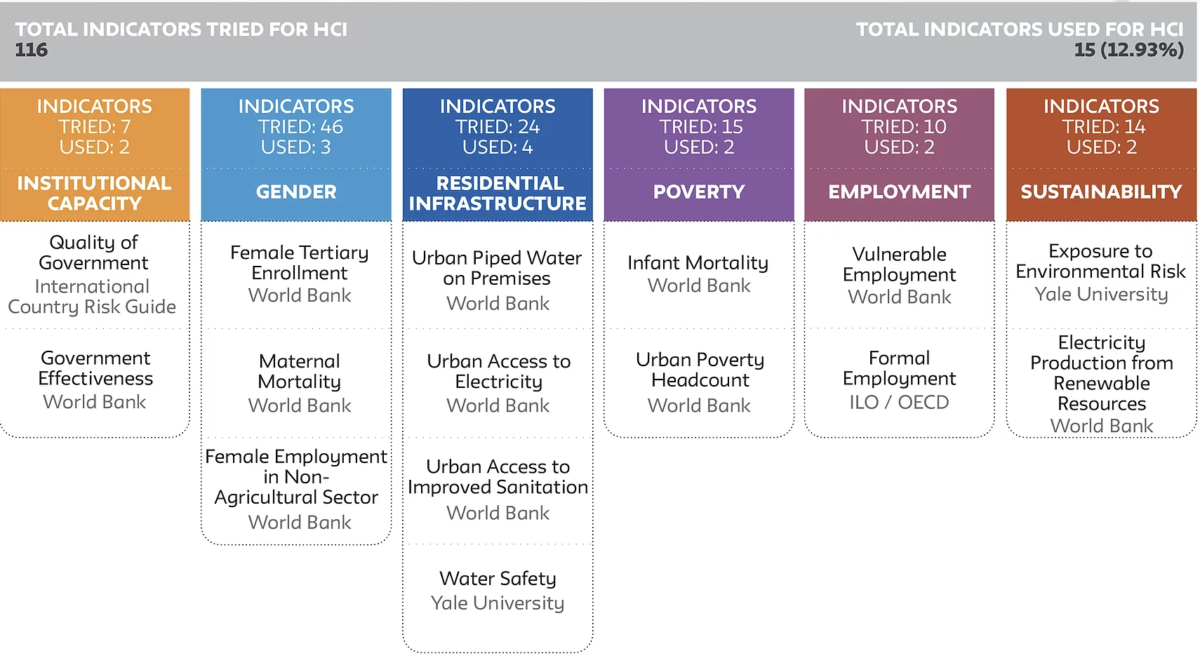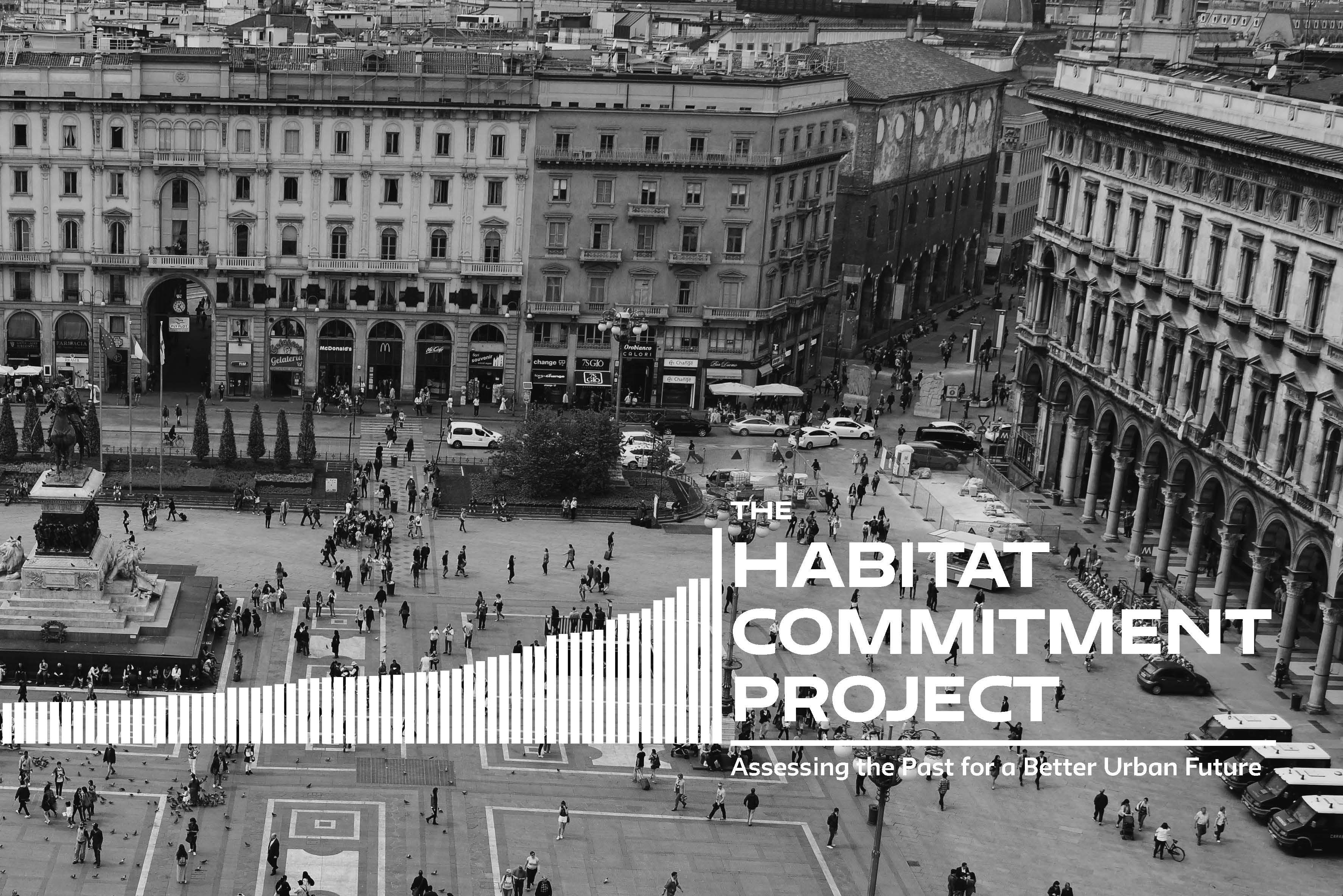The Habitat Commitment Project
The Habitat Commitment Project is a research initiative of the Global Urban Futures Project (GUF), which assessed the fulfillment of commitments made by governments at the 1996 Habitat II Conference. Specifically, the GUF created the Habitat Commitment Index (HCI), which quantitatively measured the progress made towards improving urban well-being in 169 countries and 170 cities. The HCI is unique as it does not assess countries and cities by absolute achievement levels (for instance total achievement in sanitation), but it weights performance by a country and city’s capacity (weighting sanitation by local GDP), which allows for a fairer ranking of results.
Socioeconomic indicators, such as measures of poverty, access to basic services, and education, can provide a meaningful representation of the well-being of individuals, the goal of the HCI is to look not only at well-being, but at levels of commitment on the part of national governments to meeting the goals and objectives set forth at Habitat II. After testing 116 data sets, only 15 were found to satisfy HCI requirements. The table below shows the final 15 indicators chosen, across the six HCI dimensions

In 2016 ten members of the New School faculty and fifteen graduate students attended Habitat III, The United Nations Conference on Housing and Sustainable Urban Development, which took place in Quito, Ecuador, from 17 – 20 October 2016. There they presented the Habitat Commitment Project at this conference.

Source: The Global Urban Futures Project

